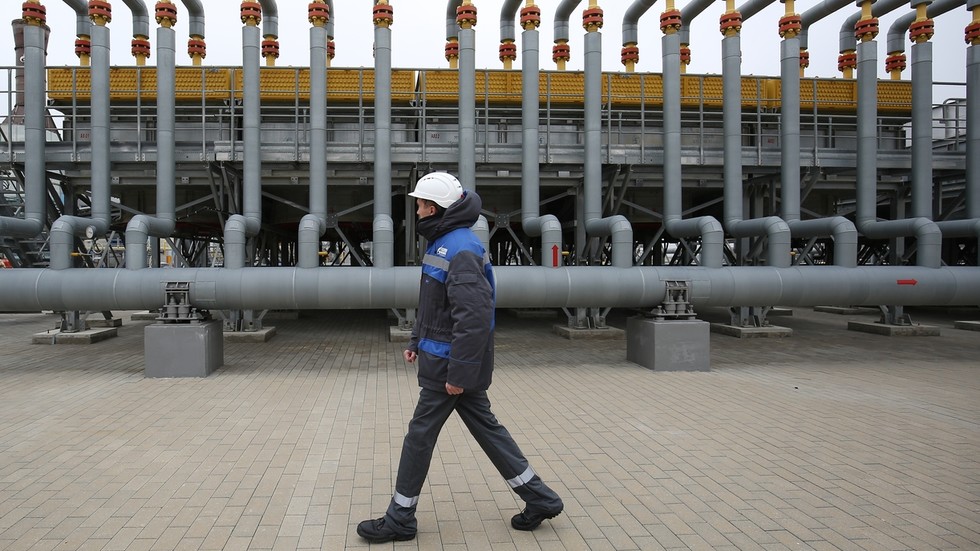The center of Dublin glitters with architectural showpieces, the offices of global corporations. But there are increasingly tents at the base of the glass facades. Some of these belong to people excluded from housing, a scarcity across Ireland and simply unaffordable for many people in the booming capital. The housing crisis is the dominant topic in Ireland right now. When he took office as taoiseach, or Ireland's head of government, in April, Simon Harris promised to provide 250,000 new homes by the end of the decade.
The second group of people sleeping in tents constitute the second-hottest topic in the Irish republic. More and more migrants are arriving here, to this island in northwestern Europe, and its capacity to accommodate them is at its limits — not least because of the housing crisis. The situation has been aggravated by Russia's invasion of Ukraine. Since the beginning of the war, 100,000 Ukrainian refugees have registered in Ireland. An EU-wide agreement means they do not have to apply for asylum first.
Ireland's government openly admits that it is unable to provide all asylum-seekers with accommodation while their applications are processed. According to the government, as of May 14, 1,780 male applicants were as yet unhoused.
 A sizable tent city sprang up around the office responsible for processing asylum applications; it has since been clearedImage: Paul Faith/AFP
A sizable tent city sprang up around the office responsible for processing asylum applications; it has since been clearedImage: Paul Faith/AFPA veritable tent city sprang up around the International Protection Office in Dublin, which is responsible for processing asylum applications. Young men were sleeping here; they had to wash and cook on the street, and rely on bike hire docking bays to charge their phones with USB cables. On May 1, the Irish authorities cleared the camp, and divided 285 male asylum-seekers between two emergency shelters. Since then, new tent encampments have repeatedly appeared near the office, and have repeatedly been cleared.
'Ireland is full'
For months, some demonstrators in historically open-hearted Ireland have chanted slogans such as "Ireland is full." At the end of 2023, there was rioting in Dublin. In several parts of the country, there have even been arson attacks on buildings that were due to be converted into refugee shelters. According to a recent poll carried out for the Irish Times, 63% of the population now want a stricter immigration policy.
 Extremist slogans such as "Ireland for the Irish" are becoming more commonImage: Evan Treacy/empics/picture alliance
Extremist slogans such as "Ireland for the Irish" are becoming more commonImage: Evan Treacy/empics/picture alliance In 2023, about 12,300 asylum applications were lodged in Ireland. Since then, however, the numbers have soared. The Irish Times cited an opposition politician who had said the government was expecting more than 20,000 applications in 2024. With a population of five million, this means that, proportionally speaking, Ireland has a similar level of migration to that of Germany.
Officials point to another factor that has led to a rise in asylum applications in recent weeks: the passing of a law in the neighboring United Kingdom to enable the government to deport migrants who arrive in the country illegally to Rwanda, in East Africa. A decision will then be made there about whether to grant them local protection status. The UK's Conservative government led by prime minister Rishi Sunak ignored an earlier court ruling to push this through, and it is already threatening to do the same with any potential judgement by the European Court of Human Rights (ECHR).
 Britain's prime minister is determined to deport immigrants who arrive illegally in the UK to RwandaImage: Toby Melville/AP Photo/picture alliance
Britain's prime minister is determined to deport immigrants who arrive illegally in the UK to RwandaImage: Toby Melville/AP Photo/picture allianceOn May 13, a high court in Belfast suspended the Rwanda Act in Northern Ireland, saying it considered it a violation of the Windsor Framework, which regulates UK-EU relations following Britain's withdrawal from the European Union.
"As part of the Brexit deal, EU law protecting asylum seekers is retained in the space of Northern Ireland, in keeping with all of the EU human rights law continuing to apply after Brexit for Northern Ireland if it's related to the 1998 [Good Friday] agreement," Colin Murray, a professor of law who lives in Belfast and teaches at Newcastle University, told DW.
Brexit complicates matters
The Good Friday Agreement of 1998 ended decades of violent conflict in Northern Ireland between unionists loyal to the government in London and Irish republicans. Among other things, it provides for an open border between Northern Ireland — part of the UK — and the Republic of Ireland. As long as both the north and south of the island were in the EU, this wasn't a problem: People and goods were moving within a unified legal and economic area. A tangible border would jeopardize peace in Northern Ireland, so the UK was grudgingly forced to accept that, after it left the European Union, certain EU regulations would nonetheless continue to apply in Northern Ireland.
The ruling in Belfast does not spell the end of the Rwanda Act for the UK as a whole. "It remains valid law that's fully effective for other parts of the UK," says law professor Colin Murray. However: "That does make it more difficult to operate the UK government's standard immigration policy in practice. For example, it would historically have moved asylum seekers to accommodation throughout the United Kingdom. Whereas now, if they come into the space of Northern Ireland, they get these additional rights protections."
Before the ruling, many asylum-seekers were already trying to cross from the North to the Republic of Ireland, where they would not face deportation to Rwanda. According to Ireland's justice minister Helen McEntee, this is currently how 80% of all asylum seekers are entering the country — more than 6,000 people since the start of the year. Right now, as Dublin struggles to cope, her cabinet is looking for ways to return the migrants to Britain.
 Irish and Northern Irish police stop cars at the border for random checks, but migrants can still slip throughImage: Charles McQuillan/Getty Images
Irish and Northern Irish police stop cars at the border for random checks, but migrants can still slip throughImage: Charles McQuillan/Getty ImagesTaoiseach Harris reminded his British counterpart, Rishi Sunak, of an agreement signed in 2020, in which the UK pledged to take back migrants who entered the Irish Republic from the North. Sunak countered that the agreement only regulated procedural issues, and did not contain any legally binding commitments. Instead, the Conservative politician, who is likely to be voted out of office in a few months, called for other EU countries such as France to take migrants back.
This article has been translated from German.

 6 months ago
27
6 months ago
27









